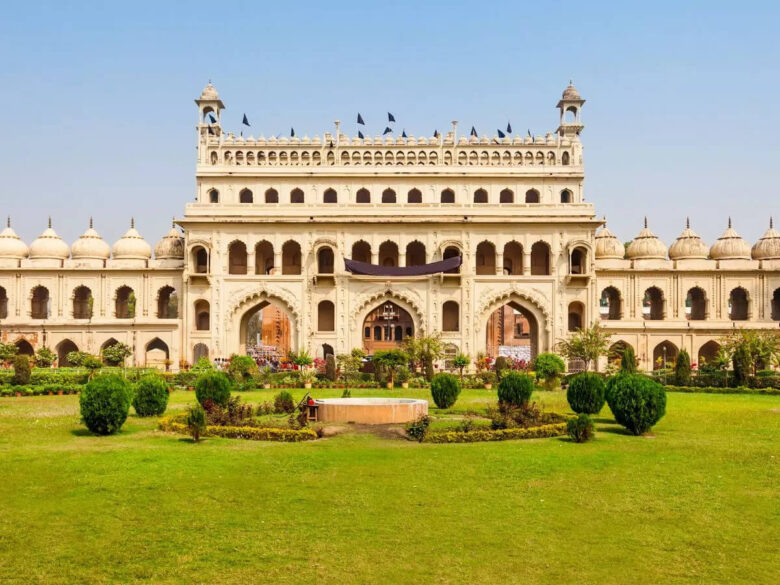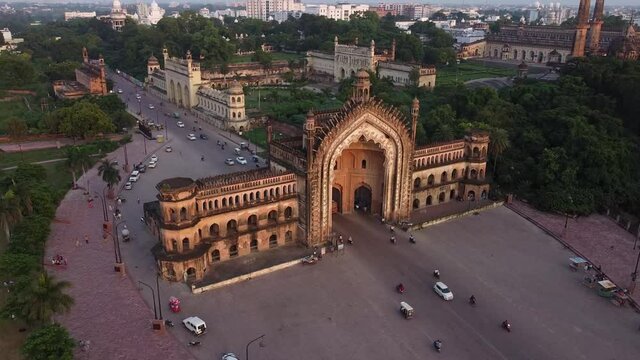Lucknow, the capital of Uttar Pradesh, is often celebrated for its grand monuments like the Bara Imambara and the Rumi Darwaza. However, beyond these well-known landmarks lies a treasure trove of lesser-known historical sites that offer a deeper insight into the city’s rich heritage. These hidden gems, often overlooked by tourists, reveal the layers of history and culture that have shaped Lucknow into the vibrant city it is today. Whether you’re a history enthusiast or simply looking to explore something new, here’s a guide to some of Lucknow’s lesser-known historical sites that are well worth a visit.
1. Dilkusha Kothi
Dilkusha Kothi is a striking example of European-inspired architecture in Lucknow. Built in the early 19th century, this grand structure was originally a hunting lodge and later served as a summer retreat for the Nawabs of Awadh.
- What to See: The ruins of Dilkusha Kothi, with its baroque architecture and sprawling gardens, offer a glimpse into the colonial influence on Nawabi architecture. The site features grand facades, tall columns, and intricate stucco work, though much of it was damaged during the 1857 uprising.
- Why Visit: Dilkusha Kothi is a quiet and peaceful spot, ideal for those interested in exploring the less-touristy side of Lucknow’s history. The blend of British and Nawabi architectural styles makes it a unique and fascinating site.
Location: Near Gomti River, Lucknow.
2. Kaiserbagh Palace Complex
The Kaiserbagh Palace Complex was once the heart of Nawabi life in Lucknow. Commissioned by Nawab Wajid Ali Shah in the mid-19th century, the complex was designed as a grand palace with gardens, pavilions, and courtyards.
- What to See: Although much of the original complex was destroyed by the British after the 1857 uprising, remnants of the Kaiserbagh Palace still stand, including the Hawa Mahal and the Baradari. The surviving structures reflect the opulence and architectural grandeur of the Nawabi era.
- Why Visit: The Kaiserbagh Palace Complex offers a poignant reminder of Lucknow’s royal past and the impact of colonial rule on the city’s heritage. Exploring the ruins provides a deeper understanding of the city’s history and the architectural innovations of the Nawabs.
Location: Kaiserbagh, Lucknow.
3. Chattar Manzil
The Chattar Manzil (Umbrella Palace) is an iconic structure along the banks of the Gomti River, known for its distinctive umbrella-shaped domes. Built by the Nawabs of Awadh, the palace was used as a residence and later by British officials.
- What to See: The palace complex includes two buildings—one known as the Chattar Manzil and the other as the Farhat Baksh. The architectural style is a blend of Indo-European elements, with beautiful arches, pillars, and the characteristic chhatris (domes).
- Why Visit: Chattar Manzil is a fascinating site that showcases the fusion of Indian and European architectural styles. Although it’s currently under restoration, it’s still worth a visit for its historical significance and unique design.
Location: Near the Gomti River, Lucknow.
4. Sikandar Bagh
Sikandar Bagh is a historic walled garden that played a significant role during the 1857 Indian Rebellion. Originally built as a pleasure garden by Nawab Wajid Ali Shah, Sikandar Bagh became a battleground during the Siege of Lucknow.
- What to See: Today, Sikandar Bagh houses the National Botanical Research Institute, but visitors can still explore the garden’s historic pavilion and the remnants of its old walls, which bear the scars of the 1857 conflict. The garden itself is lush and peaceful, offering a respite from the city’s hustle.
- Why Visit: Sikandar Bagh is an important historical site that offers a glimpse into both the leisure activities of the Nawabs and the tumultuous events of the 1857 uprising. The site’s combination of natural beauty and historical significance makes it a compelling place to visit.
Location: Near Hazratganj, Lucknow.
5. Husainabad Clock Tower
The Husainabad Clock Tower is an architectural gem in Lucknow, often overshadowed by more famous landmarks. Built in 1881 by Nawab Nasir-ud-din Haider, the clock tower stands 221 feet tall and is one of the tallest in India.
- What to See: The clock tower’s Victorian-Gothic design, with its intricate carvings and towering spire, is a testament to the British influence on Lucknow’s architecture. The clock mechanism was imported from London, and the tower remains a symbol of the city’s colonial past.
- Why Visit: The Husainabad Clock Tower is a beautiful example of 19th-century architecture and offers a striking contrast to the traditional Mughal and Nawabi structures in Lucknow. It’s a must-see for architecture enthusiasts and those interested in the city’s colonial history.
Location: Husainabad, Lucknow.
6. Shah Najaf Imambara
The Shah Najaf Imambara is a lesser-known but architecturally significant site in Lucknow. Built by Nawab Ghazi-ud-Din Haider in the early 19th century, the Imambara is a replica of the tomb of Imam Ali in Najaf, Iraq.
- What to See: The Imambara houses the tomb of Nawab Ghazi-ud-Din Haider and his wives. The structure’s simple yet elegant design, with its domed roof and expansive courtyards, reflects the spiritual and cultural significance of Shia Islam in Lucknow.
- Why Visit: Shah Najaf Imambara offers a peaceful and contemplative atmosphere, making it a great place to learn about the religious and cultural traditions of Lucknow. Its serene setting and historical importance make it a rewarding visit for those interested in the city’s spiritual heritage.
Location: Near Hazratganj, Lucknow.
7. Maqbara of Saadat Ali Khan
The Maqbara of Saadat Ali Khan is a lesser-known mausoleum in Lucknow, dedicated to the first Nawab of Awadh, Saadat Ali Khan. The tomb is an exquisite example of Mughal-inspired architecture.
- What to See: The mausoleum features a large central dome, surrounded by smaller domes and intricate arches. The interior is adorned with beautiful stucco work and inscriptions. The site also includes the tomb of Khurshid Zadi, the wife of Saadat Ali Khan.
- Why Visit: The Maqbara of Saadat Ali Khan offers a glimpse into the early history of the Nawabs of Awadh and their architectural preferences. The site’s peaceful ambiance and architectural beauty make it a hidden gem worth exploring.
Location: Qaiserbagh, Lucknow.
8. Moti Mahal
The Moti Mahal (Pearl Palace) is one of the lesser-known palaces in Lucknow, built by Nawab Saadat Ali Khan as a residence and a place for watching animal fights and other royal sports.
- What to See: The palace is part of a complex that includes the Mubarak Manzil and the Shah Manzil. While the palace’s interiors are no longer as opulent as they once were, the exteriors still showcase beautiful architectural details, including arched windows and decorative motifs.
- Why Visit: Moti Mahal offers a quieter, less touristy experience compared to Lucknow’s more famous palaces. It’s an interesting site for those who want to explore the royal past of Lucknow in a more intimate setting.
Location: Near Hazratganj, Lucknow.
9. Butler Palace
Butler Palace is a colonial-era building that was once the residence of Sir Harcourt Butler, the Governor of the United Provinces (now Uttar Pradesh). Built in the early 20th century, the palace is set on the banks of a man-made lake, offering a scenic backdrop.
- What to See: Although the palace is not open to the public, it’s worth viewing from the outside for its unique blend of Mughal and European architectural styles. The lake and surrounding gardens make it a peaceful spot for a stroll.
- Why Visit: Butler Palace is an interesting site for those interested in Lucknow’s colonial history. The palace’s architecture and picturesque setting provide a different perspective on the city’s historical landscape.
Location: Near La Martiniere College, Lucknow.
10. Chhatar Manzil and Farhat Baksh
Chhatar Manzil, also known as the Umbrella Palace, and its adjoining structure, Farhat Baksh, are lesser-known historical sites in Lucknow that were once royal palaces used by the Nawabs of Awadh.
- What to See: Chhatar Manzil is distinguished by its chhatris (umbrella-shaped domes) that give the palace its name. The interiors, though not as well-preserved, hint at the opulence that once characterized the palace. Farhat Baksh, located nearby, was another royal residence known for its European architectural influences.
- Why Visit: These sites offer a glimpse into the residential life of the Nawabs and the blend of cultural influences that shaped Lucknow’s architecture. Although not fully restored, the palaces are fascinating to explore for those interested in the city’s royal heritage.
Location: Near Qaiserbagh, Lucknow.
Conclusion
Lucknow’s lesser-known historical sites provide a unique and enriching experience for those looking to delve deeper into the city’s rich past. From colonial-era buildings and royal palaces to serene gardens and spiritual sites, these hidden gems offer a quieter, more intimate exploration of Lucknow’s heritage. Whether you’re a history buff, an architecture enthusiast, or simply curious about the city’s untold stories, these sites are sure to offer a memorable journey into the heart of Lucknow’s history.



